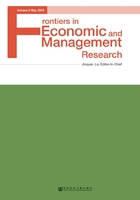
4 Empirical Results
Table 3 shows the estimates of regressions of GDP per capita on various sets of explanatory variables. First, in all the regressions, GDP 04 is always very significant. If we regress GDP 10 on GDP 04 alone, R2 is 0.9412, compared with that in the first barebone regression, 0.9550, which means the initial condition of economic level determines a large part of the current economic condition.
Table 3 Regression of GDP Per Capita on Natural Resource, Infrastructure, Human Resources and Reform and Openness

Second, coal is the most significant resource affecting economic development level, where positive numbers mean that regional economic development is still dependent on coal, which is in line with the fact that coal is the primary energy source of industrial production in China. Water resource is positively significant in the fully specified model, and land resource is only significant in regression 1 at the 10% level. This finding may imply that, in contrast with coal, which is directly used in industrial production, water and land, which may be more important in agriculture production, are gradually losing their impact on regional development.
Third, surprisingly, infrastructure, both hardware and software, is almost insignificant, with the only exception of railway density in the full specified model at 10% level. From regression 1 to regression 2, after adding three infrastructure variables, although R2 increases a bit and the coefficients on coal and GDP 04 decrease, which implies that transportation may play a particular role in raising the economic development level, this role is very unsure based on our regressions. Moreover, the insignificance of education level is entirely unexpected. Even worse, adding education variables in regression 3 only raises R2 by 0.06 percentage point and makes the coefficient on GDP 04 higher and the coefficients on resources insignificant. These findings for infrastructure contradict common sense and are hard to interpret. One possible explanation is that poor provinces do not necessarily fall behind in infrastructure construction and education, which may be the outcome of the long-term investment in such aspects by the central and local governments in the previous period.
Finally, in regression 4, including the variables for openness and reform substantially increase the explanatory ability of the model, with R2 rising by 2.3 percent points from the previous regression. Also, the coefficients on openness and privatization are very significant with the expected positive sign. This means that while market reform and opening policies have been carried on for almost 30 years, the effects of reform are persistent and significant. Provinces that are more open to international trade and encourage private businesses enjoy higher levels of economic development. Even though openness may be affected by the geography of one province, privatization can be free from geography or resource concerns. Therefore, together with the findings in the previous paragraphs, market reform should still be the top priority of development strategies. This is not to deny the importance of infrastructure and education, but to remind policymakers of using more market-oriented thinking to design the regional development plans, reducing the reliance on the government expenditure on stimulating economies.
Table 4 reports the estimation results of regressions of the GDP growth rate on various sets of explanatory variables. First, the coefficient of GDP 04 is nearly zero in all the regressions, implying that there is no convergence in the period of 2004 to 2010. Second, unlike in the set of regressions of GDP per capita, land is the most significant resource variable in affecting GDP growth rate. However, its effect is diminishing when education and reform variables are included, and natural resource variables overall are insignificant in the growth regressions. Third, the hardware infrastructure variables are still insignificant in the growth regressions, but education level, especially the share of the population with secondary education, substantially contributes to economic growth. In the full specified model, a one percent increase in this variable will result in 35.3 percentage points increase in the growth rate. Finally, openness and market reform also lead to faster growth but it is not as significant as in the GDP per capita regressions.
Table 4 Regression of GDP Growth Rate in 2004-2010 on Natural Resource, Infrastructure, Human Resources and Reform and Openness
